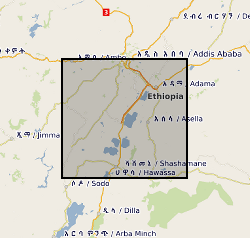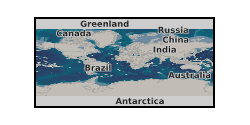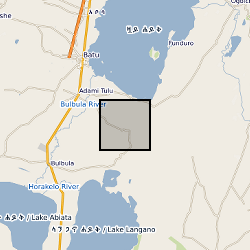Volcanic ejecta
Type of resources
Available actions
Topics
Keywords
Contact for the resource
Provided by
Years
Formats
Representation types
Update frequencies
-

Many tephra layers were identified in sediment cores drilled during IODP Expedition 350. Here, 1092 glass shards from 76 tephra occurrences (layer or patch) were analysed using electron probe microanalyses (EPMA). Data are not averaged, nor normalised. Geochemistry data were collected for: SiO2, TiO2, Al2O3, Cr2O3, FeO, MnO, MgO, CaO, Na2O, K2O, P2O5, SO3, Cl and O. Secondary standard data are given, as well as beam setup conditions. The data were obtained using the instruments at the University of Bristol, over two sessions during October and November 2014.
-

Glass major element geochemical data on Late Quaternary tephra deposits from the Main Ethiopian Rift volcanoes. These data were acquired using Electron Microprobe Analysis, and secondary standard data (MPI-DING glasses) are also included. All samples were given a unique name related to the outcrop from which they were obtained. Outcrops are named "MER" followed by a 3-digit number (e.g. MER153). Samples from a given outcrops are given the same name, followed by a letter (e.g. MER153A). Outcrop localities, with GPS coordinates (Lat Long WGS84) and brief description of the geology are also included. These data are published as Supplementary Files to a paper published in Journal of Volcanology and Geothermal Research: Fontijn et al (2018), https://doi.org/10.1016/j.jvolgeores.2018.02.001.
-

The data provides a summary of volcanic ash samples collected from around Anak Krakatau, Indonesia, in August 2019, originating from the December 2018 eruption. The ash was generated in eruptions immediately following the sector collapse of Anak Krakatau. The data provides a summary of sample locations, brief information on the sample context (original notebook entries for the field sites, alongside summary stratigraphic descriptions), componentry information for selected ash samples, laser-diffraction grain-size information for the ash samples, whole rock XRF compositional analysis of selected samples, and EPMA mineral analyses from selected samples.
-

This dataset presents tephra layers, Ar-dates, age-model & stable isotope data from the >250 kyr-long Lake Chala sediment record, Kenya/Tanzania. The file is split into six tables: (1) metadata on the 30 tephra layers (29 visible tephra layers, one cryptotephra) studied to date, including sample and core codes, summary characteristics and ages; (2) summary of Ar-dating results on ten of the Lake Chala tephra layers; (3) the DCH_TephraAge Bayesian age model, which combines tephra, 210Pb and 14C age-estimates for the length of the core; (4) Raw single-grain WDS-EPMA results for all tephra layers studied in the DeepCHALLA sediment record; and (5) secondary standard data; (6) unpublished Diatom ?18O (‰ VSMOW), Bulk organic ?13C (‰), %C and Diatom d13C (‰) measurements for the full length of the core (given on a composite depth scale). These chronological data (Tables 1-5) are central to the reconstruction of palaeoclimate from a multi-proxy analyses of the Lake Chala sediment sequence and are included in publications by Baxter et al. (2023) and Martin-Jones et al. (2020, in review), for which references are given in the appropriate files. Stable isotope data (produced by Barker and Leng) remains unpublished at the time of upload. The data was generated by Catherine Martin-Jones, Christine Lane, Maarten Blaauw, Darren Mark, Melanie Leng and Phil Barker between 2017-2022. Much of the tephra data is published and references are provided.
-

The dataset worksheet contains a list of core samples taken during IODP Exp 350 and foraminifera-based data for selected samples. The work was started with the aim of reconstructing palaeoproductivity changes (namely surface-to-deep carbon isotope gradients and U/Ca measurements) over tephra layers in order to test the ‘ash fertilisation hypothesis’. However, the work has been temporarily halted given the on-board volcanologists ongoing concerns that the ash layers in the selected cores have been reworked and therefore are not primary. Because of the induration and silicification of the core samples at quite shallow depths in the core, the other aim of the project (to reconstruct palaeoceanographic changes from 16-0 Ma) was not possible. The spreadsheet contains a full list of samples and a list of samples that have been examined and analysed. The data worksheet contains the no. of Globigerinoides ruber (with weight), Oridorsalis umbonatus, Uvigerina spp. and Cibicidoides spp. specimens for specific samples. For selected samples, stable oxygen and carbon isotopes are given and a graph of the carbon isotopes vs depth in core is presented.
-

This dataset is the output of a NERC fellowship aimed to understand the long-term dynamics of tropical vegetation through palaeoecological analysis. For doing this, two sedimentary archives (Laguna Pindo and Laguna Baños) from Ecuador were radiocarbon dated and analysed for pollen, non-pollen palynomorphs, charcoal, chironomids, stable isotopes and XRF of tephra deposits. Each proxy was analysed at different resolution. Laguna Pindo is a mid-elevation lake (1250 m asl) that spans the last 50,000 years. Laguna Baños is an Andean lake located at 3800 m asl and contains sediments representative of the last 6500 years. Both water bodies are very shallow. The data is presented mainly in excel spreadsheets as raw data (except for radiocarbon dating data, which are the PDF files provided by NRCF and are available in the NGDC), without any math treatment or conversion (unless specified). NERC fellowship is NE/J 018562/1.
-

120 samples of 57 tephra layers identified at IODP Expedition 350 sites (U1436 and U1437) were used in grain size analysis. Some layers have one grain size measurement, others have multiple measurements throughout the tephra layer.
-

Petrological and geochemical analysis of tephra samples from Aluto volcano, Ethiopia. Data are referenced in McNamara et al., 2018: Using Lake Sediment Cores to Improve Records of Volcanism at Aluto Volcano in the Main Ethiopian Rift; https://doi.org/10.1029/2018GC007686.
 NERC Data Catalogue Service
NERC Data Catalogue Service